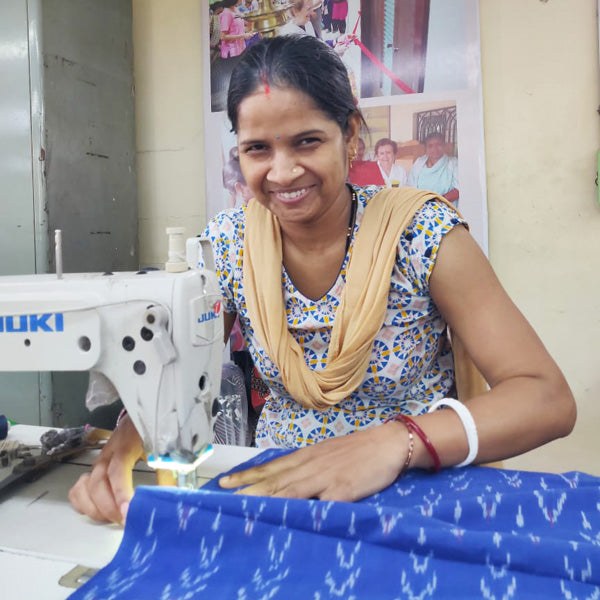
One of the most dramatic ways of patterning cloth is through the age-old technique of ikat.
Craftsmen can spend months tying and dyeing a pattern into warp and weft threads and then weaving the cloth so the pattern fits together.
But, have you ever heard of it – ikat (pronounced ee-kat)?
Ikat is a traditional resist-dyeing technique originating in Indonesia and the Middle East. It is a complex process where yarns are dyed before being woven instead of after. The basis of the technique is to first wrap the unwoven threads around a frame and then to tie-dye the threads, before the weaving process takes place.

Because the penetration of the dye is not perfectly resisted by the fabric ties used, the line between those areas that have taken the dye and those that have not isn't defined. This leads to the pattern on the cloth having a slightly blurry aspect. This characteristic gives ikat fabric a distinctive and unique blurry-like finish.
The blurriness can be reduced by using finer yarns or by the skill of the craftsperson. Ikats with little blurriness, many colours and complicated patterns are more difficult to create and therefore often more expensive. However, the blurriness that is so characteristic of ikat is often prized by textile collectors.
Warp ikat is the simplest of the ikat techniques. This involves an original thread – often white - and a dye bath in another colour. The tied portions form a pattern against a background. By tying and untying more sections of the warp threads and immersing the tied threads in a dye of a different colour, a pattern of four colours appears. The first of which un-dyed colour of the warps, the second and third the colours of the dye baths and the final colour produced by the combination of the two dyes.
Weft ikat is a sophisticated process originally from the Yemen which spread to India and South East Asia. With this technique the weft threads must be wound onto a simple rectangular frame. Threads that are to be given identical patterns are bunched together on the tying frame, and the resist patterns are then tied in. The tied yarn is dyed in the same manner as warp ikat, then woven in as the weft on a plain warp.
Double ikat is a most expensive textile. Craftsmen can spend months tying and dyeing a pattern into warp and weft threads and then weaving the cloth so the pattern fits together. Double ikat is only woven in India, Bali and Japan.


Ikat is an Indonesian word, which depending on the context, can mean: cord, thread, knot as well as the verbs "to tie" or "to bind". The name of the finished ikat woven fabric originates from the tali (threads, ropes) being ikat (tied, bound, knotted) before they are being put in celupan (dyed by way of dipping), then berjalin (woven, intertwined) resulting in a berjalin ikat- reduced to ikat.
These days, ikat has come to refer to the cloth and pattern as well as the process, but no matter how or where it was produced, its simultaneously indigenous and global vibe continues to greatly inspire both fashion and interior designers alike.
Would like to finish this post by introducing some of the unique Ikat styles of our summer 25 collection. The Kasbah Blouse, The Kasbah Dress, The Jordan Skirt & The Pippa Blouse. Months on the making but really worth the wait.




